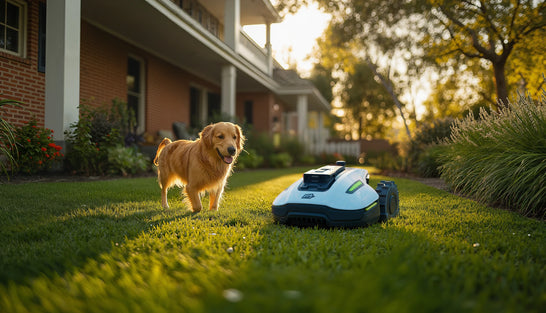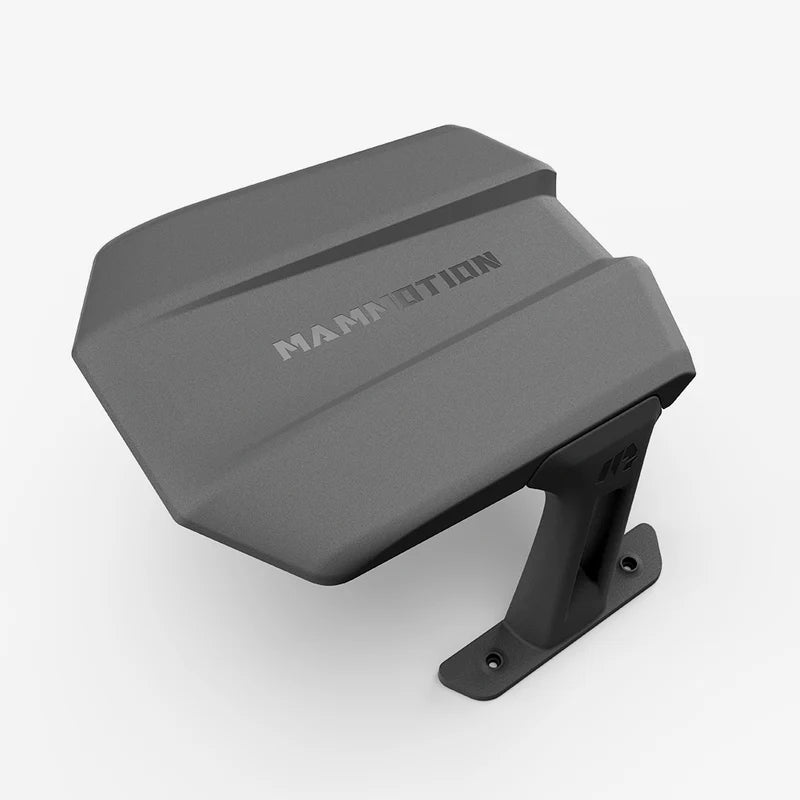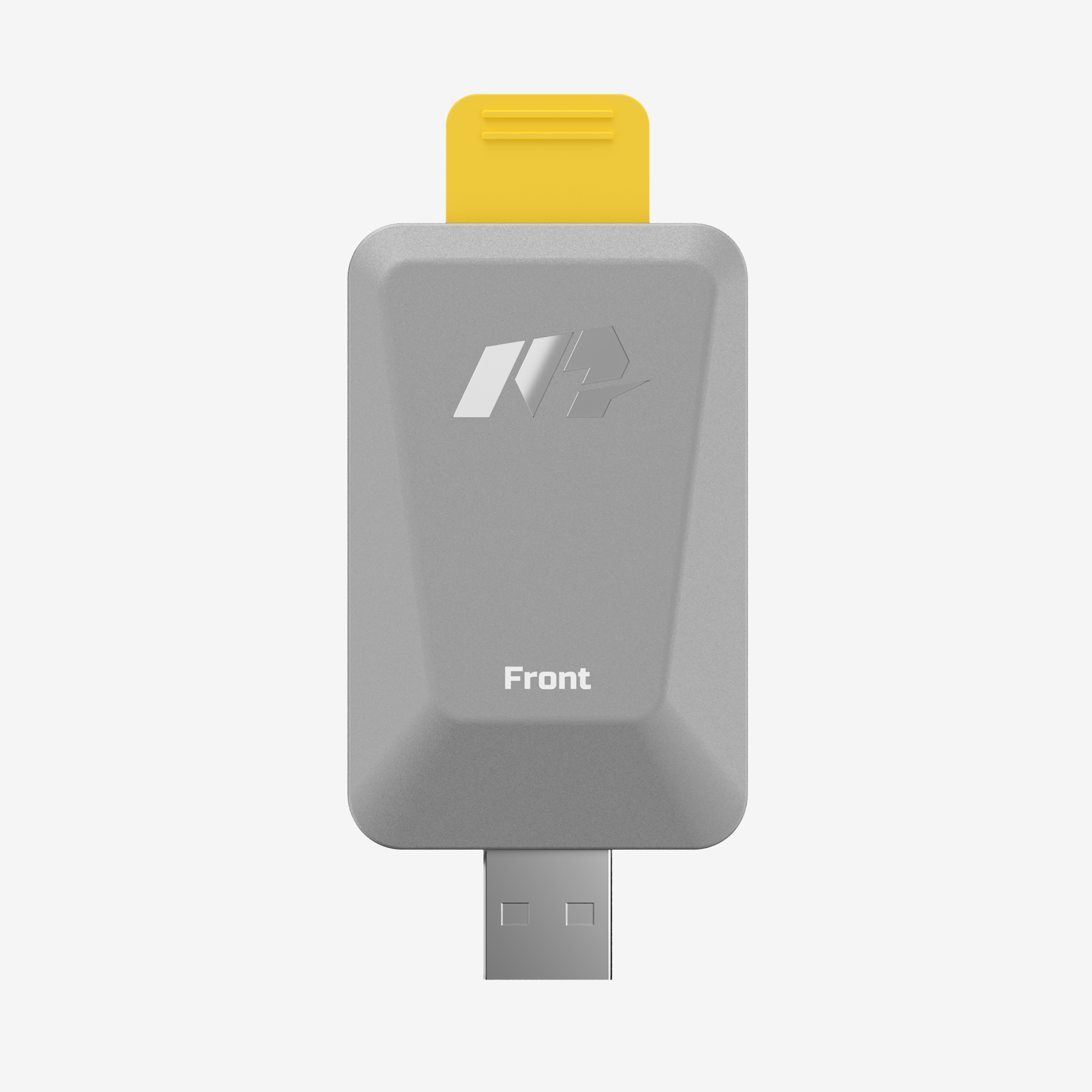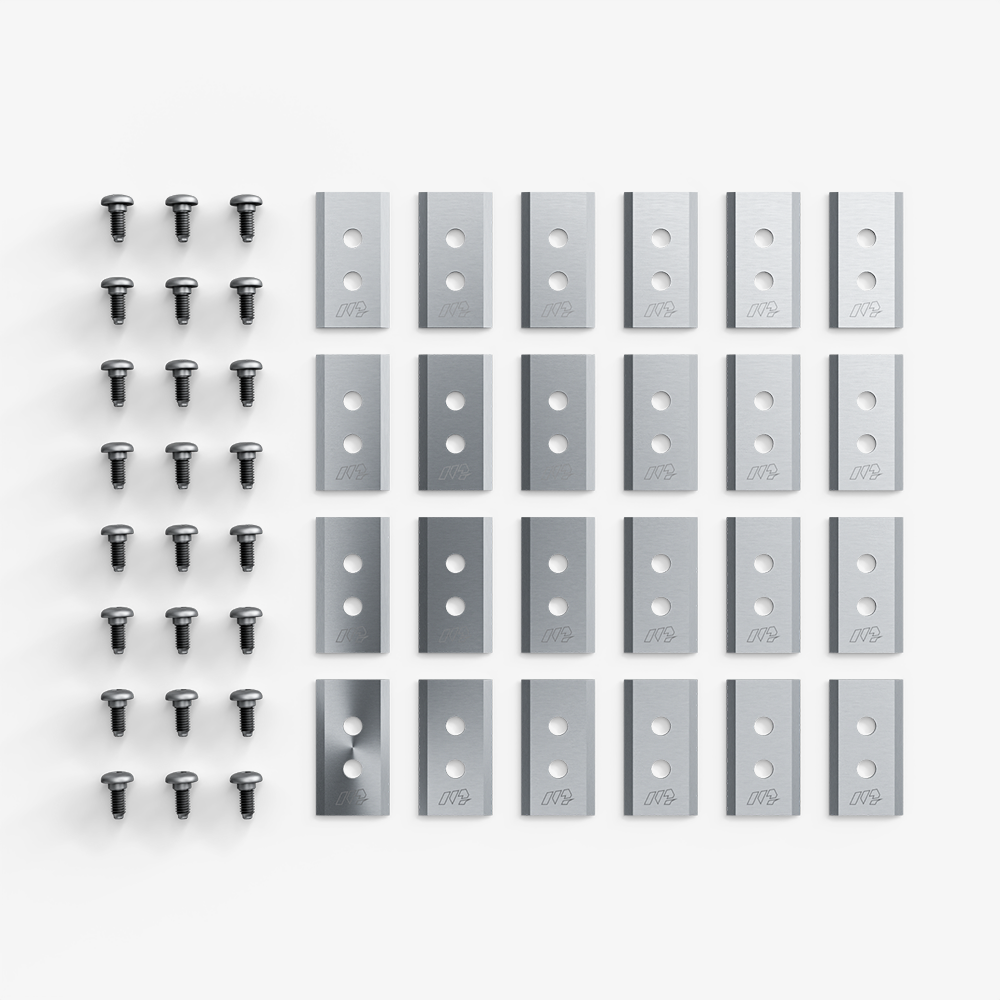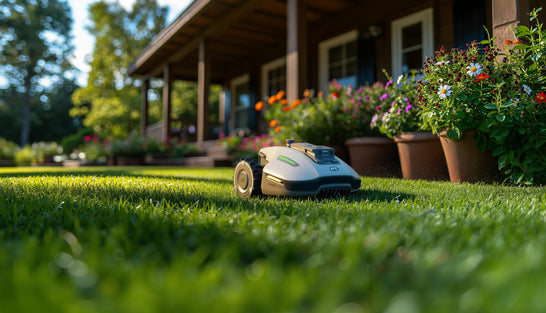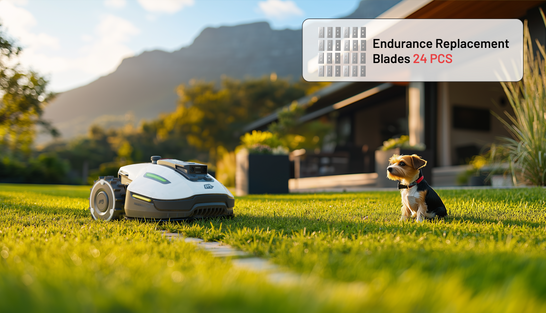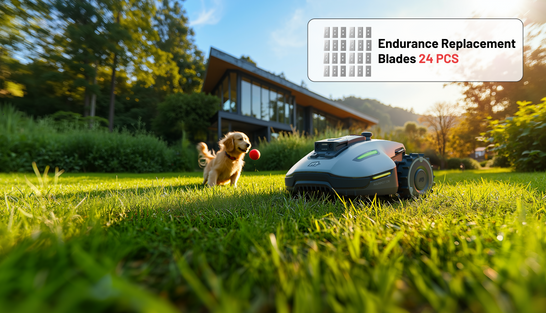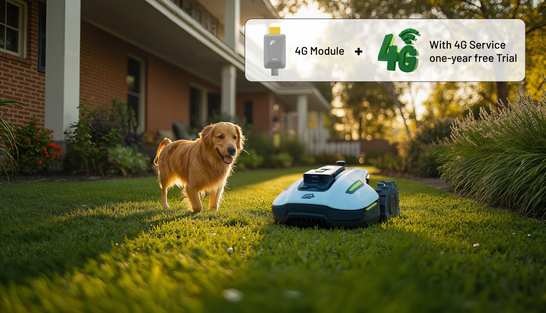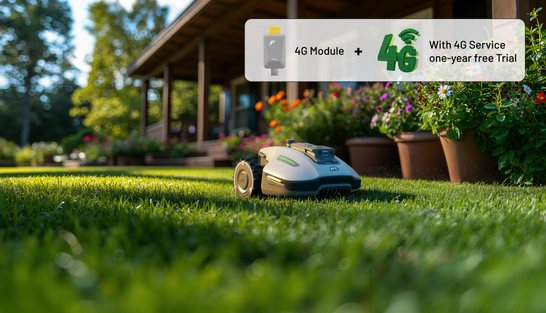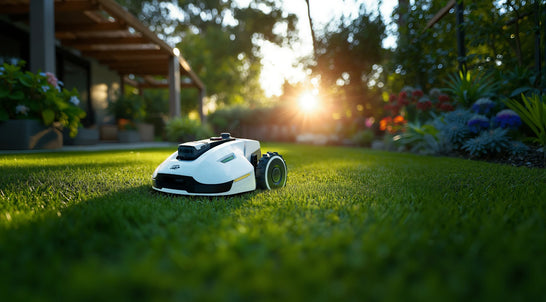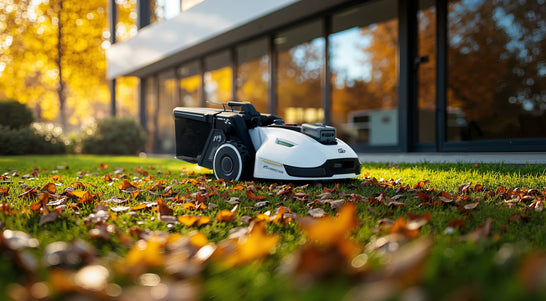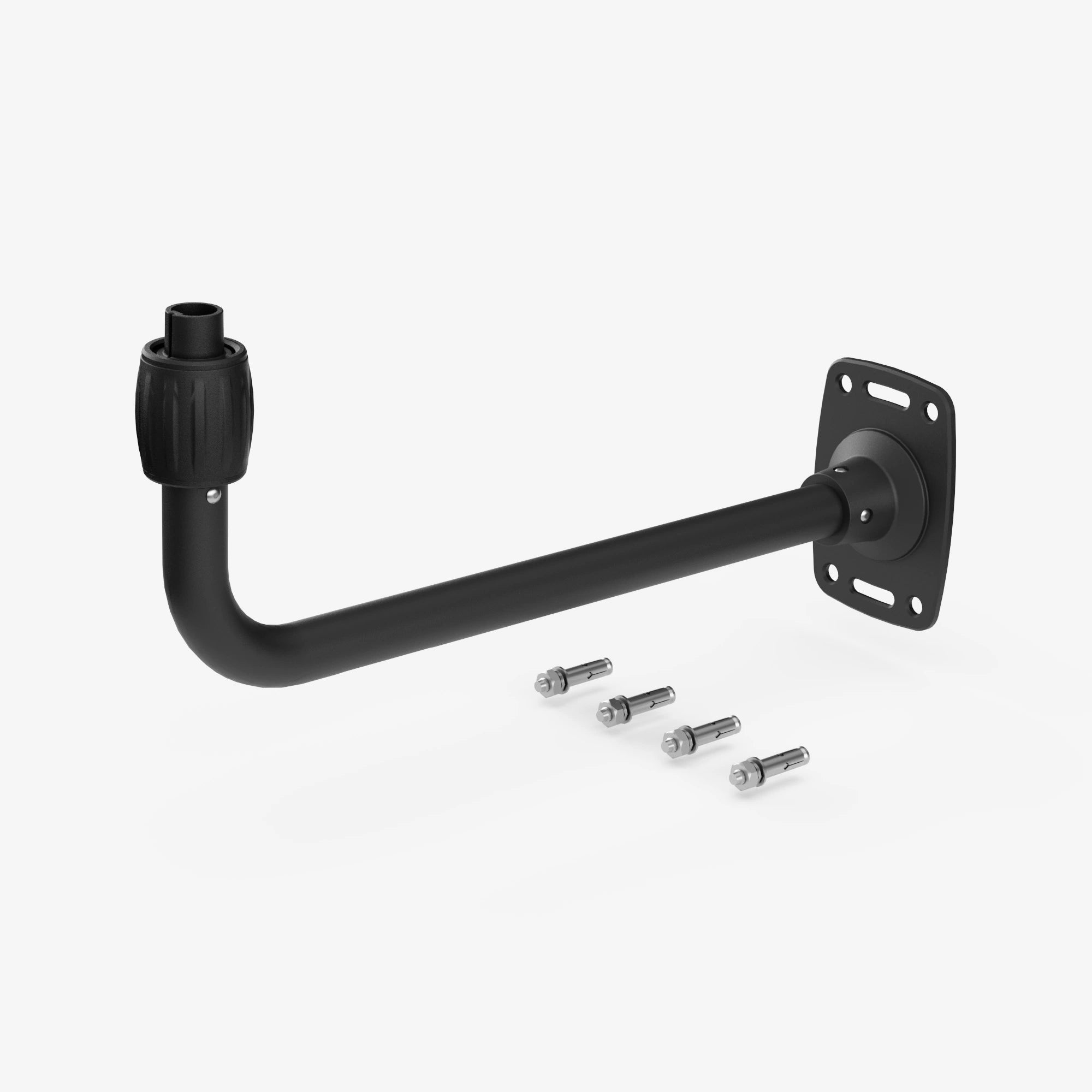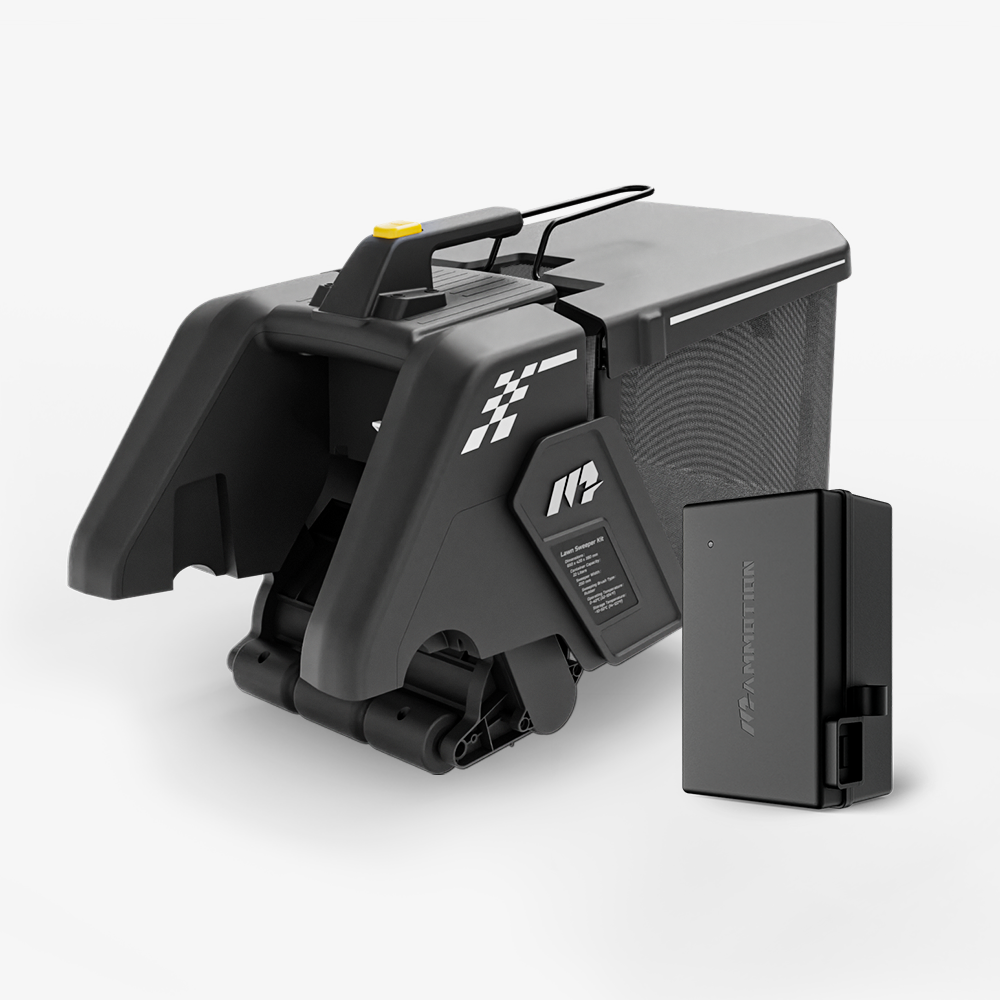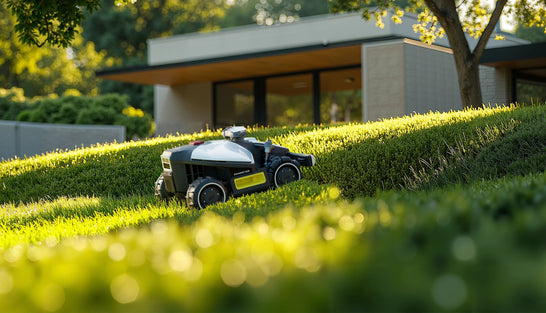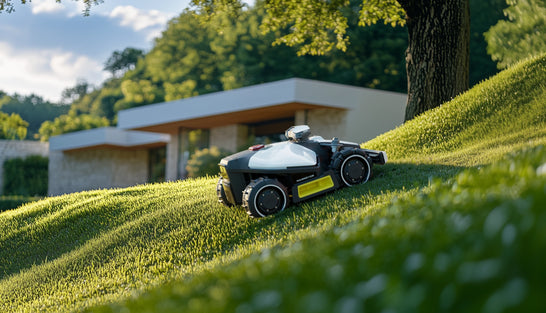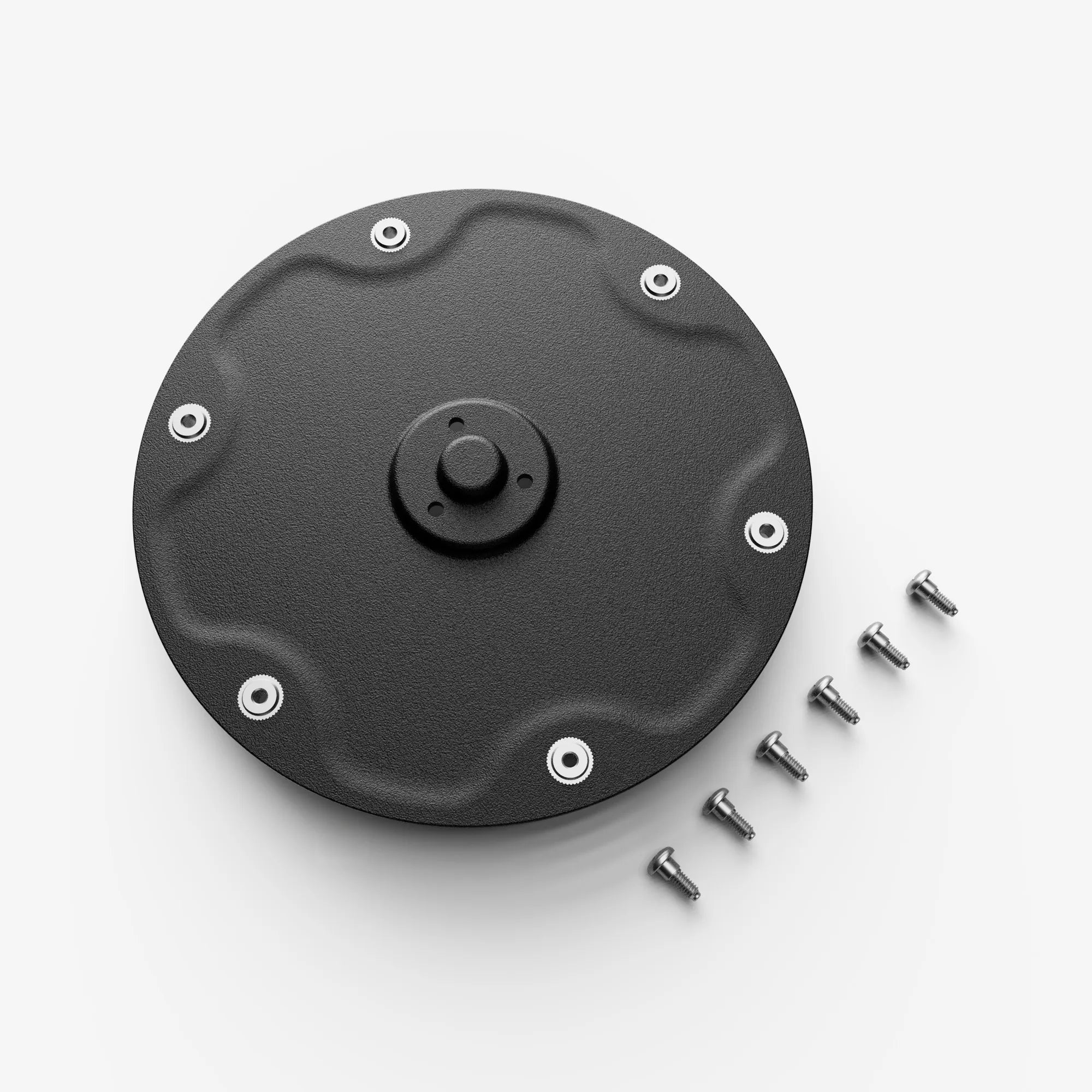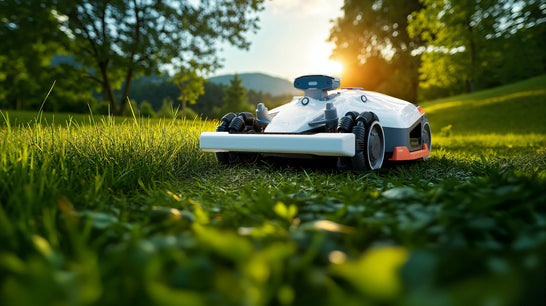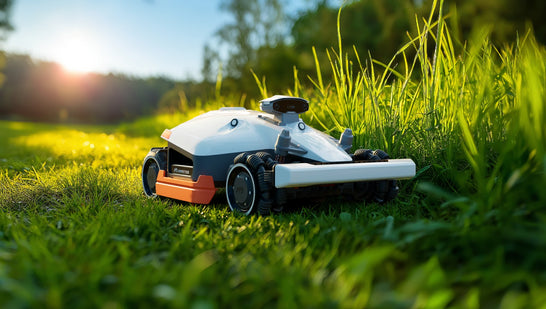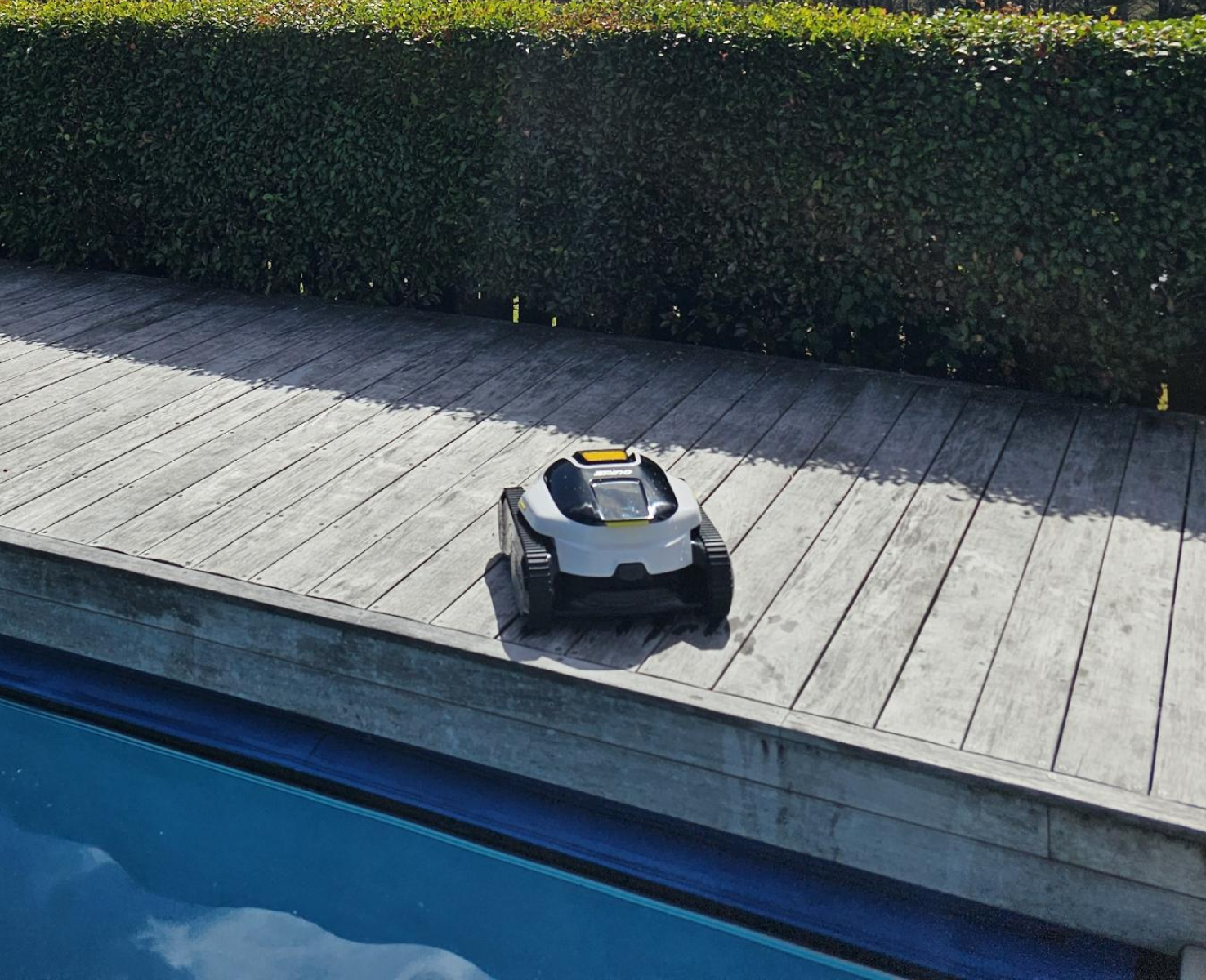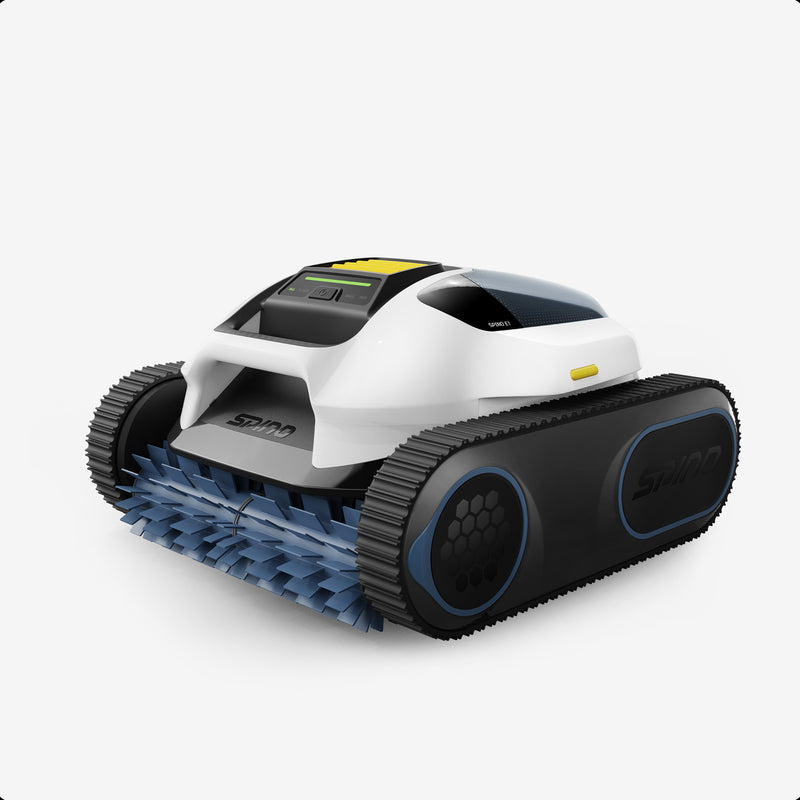Robotic pool cleaners have quickly become one of the most sought-after tools for pool owners who want a sparkling clean pool—without the constant hassle of manual scrubbing. Whether you're new to pool ownership or simply looking to upgrade your cleaning game, chances are you've got a few questions. And that’s a good thing.
With so many features, models, and price points available, it’s natural to wonder: Are robotic pool cleaners really worth it? Do they clean leaves and algae? Can I leave it in the pool all week? These are just a few of the common questions we hear from pool owners like you.
This guide is designed to answer the most frequently asked questions (FAQs) about robotic pool cleaners, based on real concerns from everyday users. From how they work and what they cost to maintenance tips, storage best practices, smart controls, and troubleshooting—we’ve got you covered.
Let’s dive in and make sure you get the most value out of your pool robot—whether you already own one or you’re just doing your homework before you buy.
Section 1: General Basics
1. What is a robotic pool cleaner and how does it work?
A robotic pool cleaner is a self-contained, plug-in device that automatically cleans your pool using electric motors, rotating brushes, and onboard filters. Unlike suction or pressure-side cleaners that rely on your pool's pump system, robotic models are fully independent. You simply plug it into an outlet, drop it into the pool, and let it do the work.
2. Can I leave my robotic pool cleaner in the pool all the time?
It’s tempting to just leave it in, but manufacturers generally don’t recommend it. While most robotic cleaners are waterproof and safe to use for extended cleaning sessions, long-term submersion can wear down seals, electronics, and components more quickly—especially in chlorinated or saltwater environments.
Best practice: Remove the cleaner after each use, clean the filters, and store it in a shaded, dry area when not in operation.
3. Can I swim while the pool robot is working?
Technically, yes—but it's not ideal. Robotic cleaners are low-voltage and safe by design, but for both safety and performance reasons, it's better to avoid swimming while the robot is in operation.
Also, human activity can disrupt the cleaner's path or cause it to miss areas during its cleaning cycle.
4. Can I run my pool robot in the rain?
Most robotic pool cleaners and their control units are water-resistant, but the power supply unit is not waterproof. If it starts raining, you should remove or safely cover the power supply to prevent damage or electrical hazard.
5. Can I use a pool robot after shocking the pool?
Wait at least 24–48 hours after shocking your pool before using a robotic cleaner. The high chlorine or chemical levels could degrade internal components, seals, and brushes.
6. Do I need to turn off the pool filter while the robot is working?
You don’t have to, but it’s usually beneficial to run the robot independently. Since robotic pool cleaners have their own filtration system, keeping your pool’s pump and filter off can help conserve energy and allow the robot to trap more debris efficiently.
7. How often should I run my robotic pool cleaner?
This depends on pool usage, size, and surroundings. For most residential pools, 2–3 times per week is enough during swim season. If your pool is under trees, used daily, or in an area with heavy debris (like pollen or dust), daily cleaning might be necessary.
8. Can robotic pool cleaners be used in saltwater pools?
Yes—most modern robotic pool cleaners are built to handle saltwater environments. Just make sure the manufacturer explicitly states saltwater compatibility.
Salt can be corrosive over time, so it's especially important to rinse the cleaner with fresh water after each use and store it properly to extend its lifespan.
Section 2: Cost & Value
9. How much does a robotic pool cleaner cost?
Robotic pool cleaners typically range in price from $300 to over $1,500. Entry-level models with basic functionality may cost between $300–500, while high-end units with advanced features like Wi-Fi, smart navigation, and wall-climbing abilities often exceed $500.
10. Are robotic pool cleaners worth the investment?
Yes—for most pool owners, a robotic cleaner pays for itself over time. While the upfront cost is higher than suction or pressure cleaners, the benefits are substantial:
- Lower long-term energy costs
- Reduced wear on your pool’s pump and filter
- Better cleaning performance
- Time savings—no more manual vacuuming
- Extended life for your pool surface due to regular cleaning
11. Why are robotic pool cleaners more expensive than other types?
Robotic cleaners are standalone machines with their own motors, sensors, microprocessors, and filtration systems. They don’t rely on your pool’s plumbing or pump, which makes them more efficient—and more complex.
12. Are there affordable models that still perform well?
Absolutely. If your pool is small or doesn’t accumulate heavy debris, there are great models under $600 that can clean floors and some walls effectively. If you're not familiar with the market, take a look at Mammotion's newest pool cleaning robot, the SPINO E1, which is sure to meet your needs.
Section 3: Features & Performance
13. Do robotic pool cleaners pick up dirt and fine debris?
Yes—robotic pool cleaners are designed to handle everything from large leaves to fine dirt, sand, and silt. Most models come with dual-layer filtration systems that separate larger debris from tiny particles, preventing cloudiness and improving water clarity.
14. Does a robotic pool cleaner pick up leaves and twigs?
Most robotic pool cleaners can handle small to medium leaves and twigs. However, if your pool is located under trees and gets large volumes of debris, choose a model with:
- A large-capacity filter basket
- Strong suction power
- Wide intake ports
15. Can robotic pool cleaners clean algae?
Yes—light algae, especially surface-level and early-stage growth, can be removed by robotic cleaners thanks to their rotating brushes. However, they won’t eliminate an active algae bloom.
16. Do robot pool cleaners climb walls and clean the waterline?
It depends on the model. Mid-range and premium models often have wall-climbing capabilities and can scrub all the way up to the tile line. Entry-level robots may only clean the pool floor.
17. Do I still need to brush my pool if I have a robot?
Not entirely, but occasional manual brushing is still recommended. Robotic cleaners can’t always reach narrow steps, complex ledges, or corners. Brushing helps loosen algae or grime so the robot can pick it up more effectively.
18. Do robotic cleaners ever get stuck or miss areas?
Older or budget models may occasionally get stuck on main drains, ladders, or irregular steps. Modern robots use advanced navigation, gyroscopes, and cordless design to reduce missed spots and ensure full pool coverage.
19. How long does a robotic pool cleaner take to clean a pool?
Most robotic pool cleaners complete a cleaning cycle in 1.5 to 3 hours, depending on pool size, shape, and debris level. Some models let you adjust cleaning cycles or choose “quick clean” modes for faster jobs.
20. Do robotic pool cleaners use a lot of electricity?
Not at all. They’re among the most energy-efficient pool cleaning options. Most models use 50–100 watts per hour, similar to a household light bulb—far less than running a traditional pool pump.
21. Do robotic cleaners plug into a regular outlet?
Yes. Robotic pool cleaners come with a low-voltage transformer power supply that plugs into a standard 110V outlet. Some newer models are cordless and battery-powered, offering more flexibility (though they often have shorter runtimes).
Section 4: Usage, Maintenance & Storage
22. How often should I robot vacuum my pool?
For most residential pools, running the robotic cleaner 2–3 times per week is ideal during swim season. However, if your pool gets heavy use, sits under trees, or collects a lot of debris or pollen, you may want to run it daily or every other day.
23. How do I clean and maintain my robotic pool cleaner?
Basic maintenance is simple and helps prolong the life of your device:
- After each use: Rinse the filter basket or cartridge with fresh water.
- Weekly: Inspect the brushes, wheels, and intake ports for trapped debris.
- Monthly: Check the cable for twisting or wear.
- Seasonally: Deep-clean the filters and inspect moving parts for damage.
Avoid using harsh chemicals on the cleaner itself. Always disconnect and dry the unit thoroughly before storage.
24. Where should I store my robotic pool cleaner?
Store it in a shaded, dry, and ventilated area. Avoid direct sun or freezing temperatures, which can damage internal electronics or plastic parts. Ideally, place it on a storage caddy or a shelf to prevent stress on the wheels and brushes.
25. Can I leave the pool robot in the water all the time?
Leaving the robot in the pool continuously is not recommended. Extended submersion increases wear and tear and can degrade rubber seals and motor components—especially in chlorinated or saltwater pools.
26. Should I remove the filter basket after every use?
Yes. A clogged or dirty filter basket reduces performance and puts unnecessary strain on the motor. Rinse it with a garden hose after each cleaning cycle and let it air-dry before reusing.
27. How long does a robotic pool cleaner last?
Most high-quality robotic pool cleaners last 3 to 7 years with proper maintenance. Some premium units can last longer if cared for well, especially if not exposed to extreme weather, poor storage, or improper water chemistry.
Section 5: Smart Tech & App Control
28. Do all robotic pool cleaners have smart features?
No. While premium and mid-range models often include smart features like Wi-Fi or Bluetooth connectivity, many entry-level models operate using manual buttons only.
29. What can I control with a robotic pool cleaner app?
Depending on the model, a companion app can offer:
- Scheduling: Set daily or weekly cleaning times.
- Cleaning modes: Choose between quick clean, floor only, or full pool.
- Cycle monitoring: See how far along the robot is.
- Manual steering: Direct the robot to specific spots (for spot cleaning).
- Maintenance alerts: Notifications for filter cleaning or diagnostics.
Some offer robust control, while others are limited to basic functions. Always check app reviews and compatibility before buying.
30. Do I need Wi-Fi to use a robotic pool cleaner?
No, Wi-Fi is not required for operation. Most robotic pool cleaners can be used completely offline with onboard buttons or remote controls. However, Wi-Fi or Bluetooth adds convenience—especially for hands-free scheduling or monitoring when you’re not home.
31. Are voice assistants (Alexa, Google Home) compatible with robotic cleaners?
Some high-end models are beginning to offer smart home integrations. This lets you start or stop the cleaner with voice commands via Alexa or Google Assistant.
32. Can I get cleaning reports or maps of my pool?
Only certain advanced models offer real-time mapping or reporting. These units create digital maps of your pool and may show cleaning history, missed areas, or efficiency stats.
Section 6: Buying Advice
33. How do I choose the right robotic pool cleaner for my pool?
Consider the following key factors:
- Pool type & size: Is it inground or above-ground? How many gallons or square feet?
- Shape & surface: Some robots handle complex shapes or slippery surfaces (like tile) better.
- Debris type: If you get a lot of leaves or sand, look for models with large baskets and fine filters.
- Wall-climbing ability: Needed for full clean, especially if algae is a concern.
- Corded vs cordless: Cordless models are tangle-free but have shorter runtimes.
- Smart features: Optional, but helpful for busy owners.
If you're unsure, mid-range models around $600–$1,000 usually balance performance and price well. Here are more details about how to choose the right robotic pool cleaner.
34. What’s the difference between robotic, suction, and pressure pool cleaners?
There are three main types of automatic pool cleaners: robotic, suction-side, and pressure-side, and they differ significantly in how they operate and what they require.
- Robotic cleaners: More efficient, thorough, and high-tech (but cost more).
- Suction cleaners: The most budget-friendly but have limited performance.
- Pressure cleaners: Good for large debris but use more energy and need additional plumbing.
35. Are cordless robotic pool cleaners better?
Cordless models offer greater freedom of movement, no cable tangling, and easier storage. Corded models, while slightly less convenient, tend to offer unlimited runtime and stronger suction, especially in larger pools.
36. Is it better to buy online or at a local pool store?
Online offers more variety, lower prices, and direct customer reviews.
Local stores may offer in-person support, demos, and faster warranty help.
If buying online, choose a reputable site and ensure the product has a valid manufacturer’s warranty.
Section 7: Troubleshooting & Warranty
37. What should I do if my robotic pool cleaner stops moving?
Start by checking these common causes:
- Power supply: Make sure the cleaner is plugged in and the outlet is working.
- Filter clogged: A full or dirty filter basket can restrict movement.
- Tangled cable: If the power cord is twisted or kinked, the robot may not move freely.
- Debris in wheels or tracks: Inspect and clean around the wheels or drive system.
If basic checks don’t help, refer to the user manual or contact customer support.
38. Why is my robotic cleaner missing spots?
This could be due to:
- Poor navigation system in older or budget models
- Obstacles like ladders or uneven steps
- Clogged filters reducing suction and cleaning ability
- Overfilled debris bin—clean it regularly
Some models benefit from resetting the navigation or manually directing the robot to problem areas.
39. Can I run my pool robot in the rain or while the pool is being shocked?
Rain: It’s safe to run your robotic cleaner in light rain, but never leave the power supply exposed to water. Always keep it elevated and covered if outdoors.
After shocking: Wait at least 24 hours after shocking your pool before using a robotic cleaner. High chlorine levels can damage internal components and shorten the cleaner’s lifespan.
40. Can I swim while the robotic cleaner is running?
Technically, yes—most robotic cleaners operate at low voltage and are safe to use while swimming. However, it’s not recommended. The cleaner may get in the way, and there’s always a small safety risk if the power supply is not properly secured or grounded.
41. What kind of warranty do robotic pool cleaners usually come with?
Most quality robotic pool cleaners include a 2 to 3-year limited warranty. This typically covers manufacturing defects, motor issues, and electronic failures under normal use.
Always check the fine print and register your device online if needed to activate the warranty.
42. How do I get support if my cleaner breaks down?
If it’s within warranty, contact the manufacturer directly or through the authorized seller. Most brands have online support portals, live chat, or phone hotlines. You may need to provide:
- Proof of purchase
- Serial number
- Photos or video of the issue
Some brands may offer local service centers or allow you to mail the unit for repair.
Conclusion: Is a Robotic Pool Cleaner Worth It?
If you're looking for a hands-free, energy-efficient way to keep your pool clean, a robotic pool cleaner is one of the smartest investments you can make. It reduces manual labor, saves time, and helps you maintain a healthier swimming environment with less chemical use.
Whether you own a small above-ground pool or a large in-ground setup, there’s a robotic model tailored to your needs—from basic plug-and-play designs to advanced app-controlled cleaners with smart navigation.
With proper care and maintenance, these devices offer years of reliable service, helping you spend more time enjoying your pool—and less time cleaning it.

